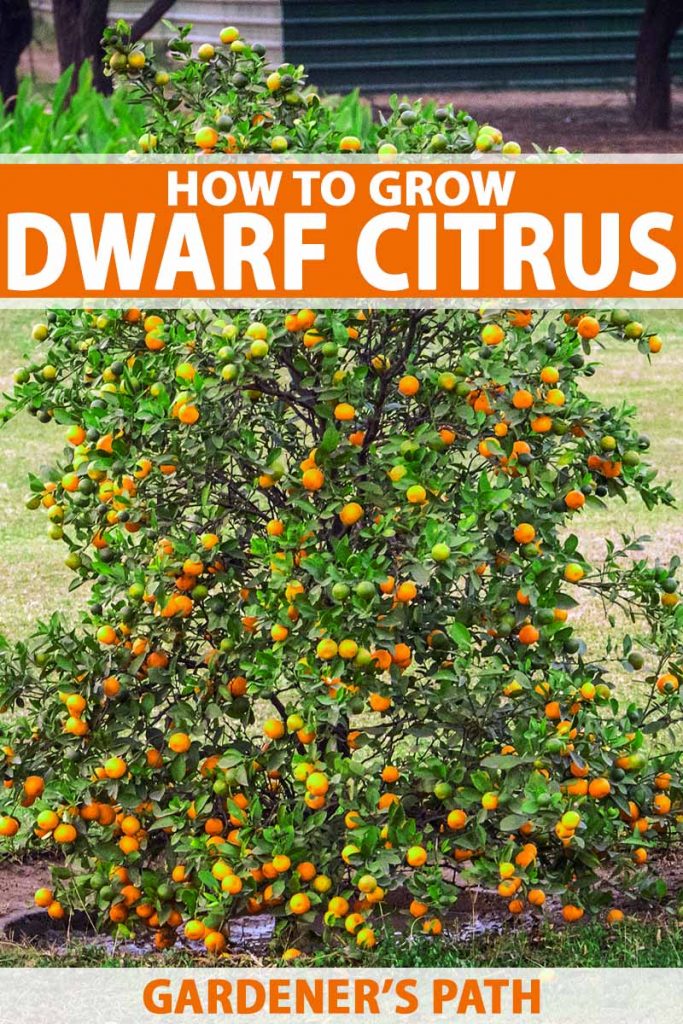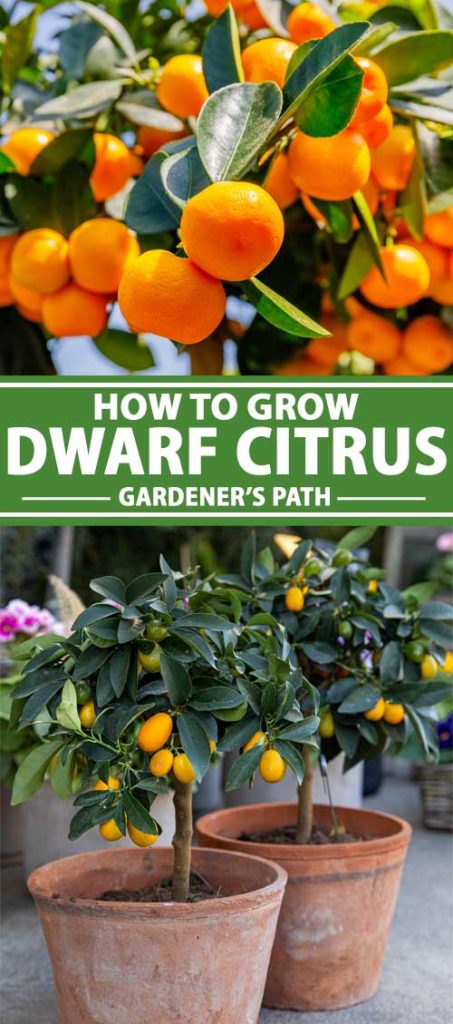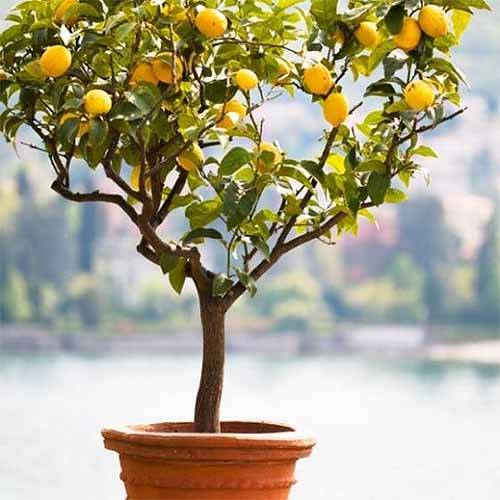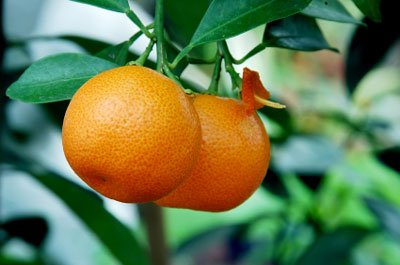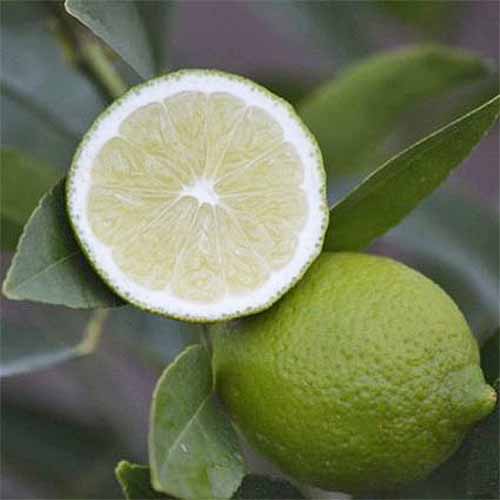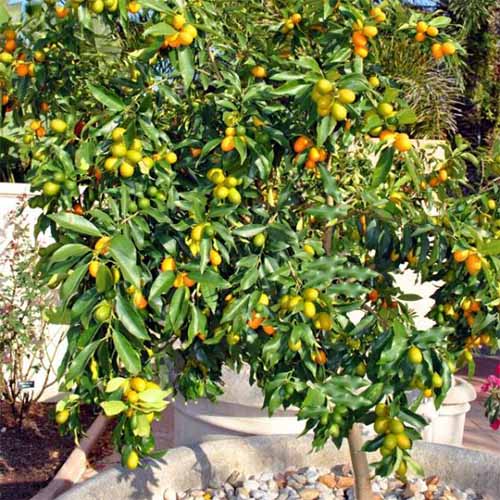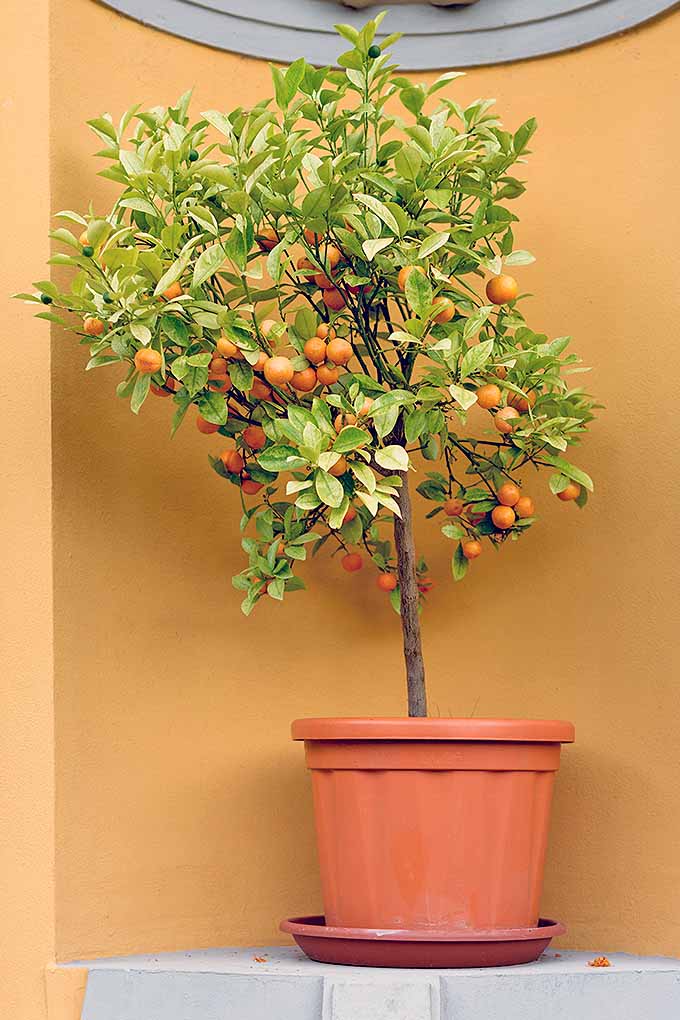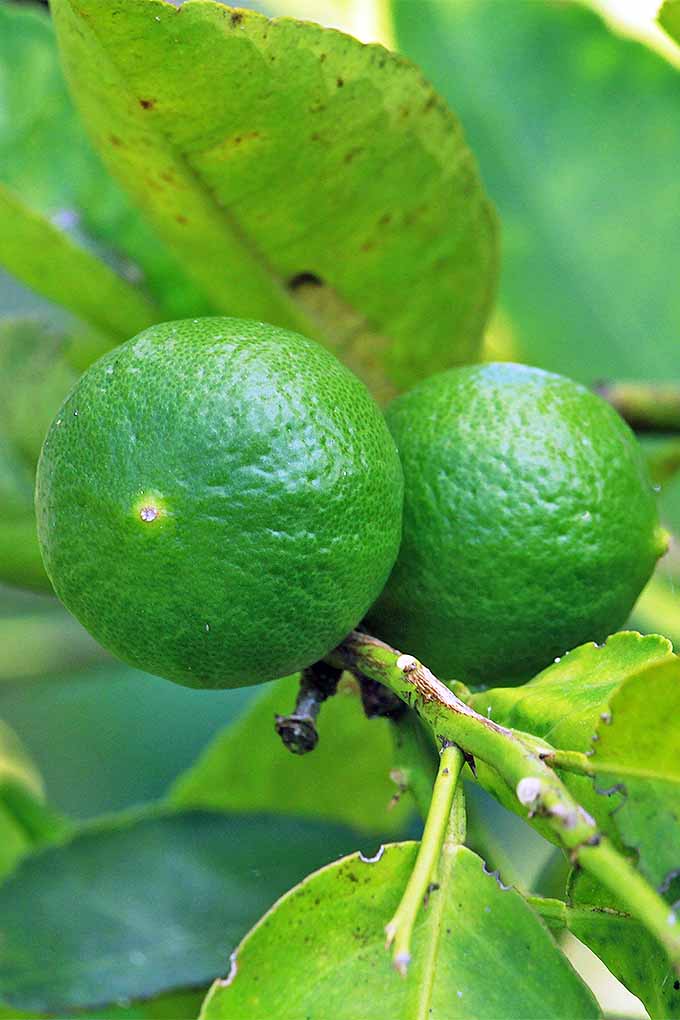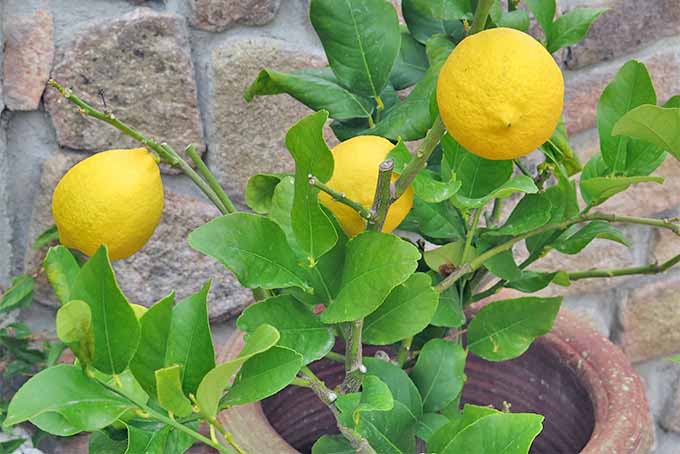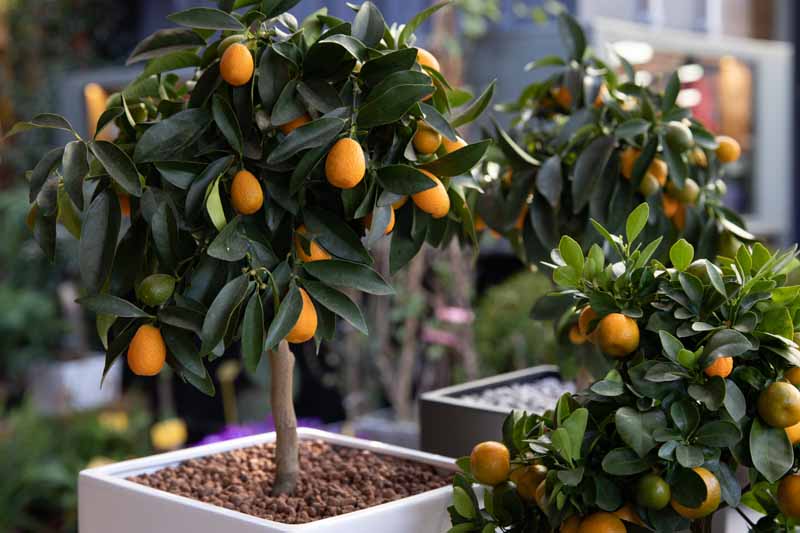All of these make the dwarf citrus a valuable plant for modern home gardening. Dwarf citrus trees are simply regular fruit trees that are grafted onto smaller plant rootstock. This means you get the tasty fruit of a normal citrus tree from a plant that works well in landscapes that can’t accommodate a full-size tree. And most importantly, of course, smaller trees mean more easily accessible fruit! Dwarf citrus trees generally grow to be a maximum of 8 to 10 feet tall. We link to vendors to help you find relevant products. If you buy from one of our links, we may earn a commission. Ready to find out more about adding one to your garden? Here’s what to come: Let’s get to the tips, talk about techniques and things to be aware of, and hopefully we can even help you to find your perfect tree.
A Versatile Landscape Addition
Dwarf citrus — lemon, orange, grapefruit, lime, tangelo, and kumquat — has as many uses in the garden as there are places for plants. You can use it as a hedge to mark a property line or to screen off a given area, or you can grow it as a specimen plant in the lawn. You can use dwarf citrus to add a little height to a perennial background, or use it as a foundation planting close to the house. It will make a lovely addition espaliered against a wall to break the glare, or simply to ornament it.
Espaliering is the process of training a tree, shrub, or woody vine to grow flat against a surface, usually a sunny and protected wall or a fence. This is often done with a specific geometric design in mind that can turn the tree into a rather breathtaking artistic statement. Or other trees are allowed to maintain their natural form, with protruding branches merely pruned off. Dwarf citrus varieties are also quite suitable for container plantings. They bring significant interest to porches or patios as specimen plantings, and they’re convenient to access come harvest time. Close proximity to the house also means it will be easier to bring your plants indoors if you live in a climate where a citrus tree cannot overwinter outdoors.
Morning or Afternoon – Just Give Them Sun
Like all plants, small trees have a few simple needs. And you need to attend to these if you’re aiming to produce beautiful trees with delicious fruit. If you’re looking for the lemony-orange flavor of Meyer lemons, consider this small tree, available from Nature Hills Nursery.
Improved Dwarf Meyer Lemon Trees You’ll get a plant in a container that’s somewhere between two and three gallons. Dwarf Meyer lemon trees grow well in pots, where they will grow to 4 feet or so. And they do well in the landscape, too, in zones 9 and 10. Dwarf Meyer lemon trees can reach 10 feet, but will easily adjust to less than four feet indoors. Brighter Blooms Nules Clementine Dwarf Fruit Tree You can choose a 1- to 2-foot tree or a 3- to 4-foot tree of the ‘Nules’ variety, which will produce copious amounts of sweet orange fruit. Looking for lime? Consider a dwarf ‘Bearss’ seedless lime, available from Nature Hills Nursery.
Bearss Lime Tree Also known as the Persian, Tahini, or seedless lime, you’ll get an evergreen plant that is a minimum of 3 years old, and will grow to about 10 feet tall at maturity. This option does well in the landscape as well as in containers. Looking for mini fruit to ornament your miniature tree? Nature Hills offers a dwarf ‘Nagami’ kumquat in a two- to three-gallon container that will grow to about 10 feet tall.
Nagami Kumquat Kumquats are known for their edible peel and lively, tart flavor. The first and most important of these needs is good drainage. While the roots must have a constant supply of moisture, they cannot tolerate waterlogged soil, or water that stands for too long. For a primer on drainage, see the green boxed-out reference section below. Citrus trees also need warmth and sunshine to produce colorful, juicy, and flavorful fruit. I know of one gardener who has some trees that only get morning sun, and other trees that only get afternoon sun. In both locations, the plants do a good job of setting and ripening their fruits.
The Perfect Dirt
Plants grown in containers do best with the least effort when they are planted in a lightweight, perlite-containing potting mix that drains well. An all-organic matter or native soil will compact too quickly, reducing aeration for roots. Commercial growers are fond of the “UC mix.” This was developed by soil scientists at the University of California Riverside’s world-renowned Citrus Research Center and Agricultural Experiment Station. In addition to the special soil mixture for container-grown plants, the Citrus Experiment Station has developed new citrus varieties and worked to address disease and pest management, post-harvest handling methods, and practices for improved commercial fruit production.
UC’s soil mixtures have been so successful that commercial growers all over the western world are using them for all types of plants. Unfortunately, unless you need a few cubic yards of this mix, and live in Southern California, backyard gardeners will likely not be able to find UC mix. Instead, look for planting mixes that are specially blended for citrus or fruit trees. When setting plants out in the garden, the citrus-specific planting mix should be combined with the soil removed from the hole in a ratio of one part mix to one part native soil. As plant roots are generally reluctant to enter a new growing medium, mixing a citrus-specific soil with the native soil will make the tree’s transition easier. When transplanting your tree, set the root ball high in the hole, high enough for the soil over the finished job to slope from the tree trunk to the surrounding soil level. There is seldom any overwatering problem in containers if a well-draining soil is used. In garden soil, excess water must have a means of escape. If the soil has naturally good drainage, there is little to worry about. Here’s how to check for well-draining soil in an existing area where you would like to plant, and what you can try if you have a problem:
Dig a hole of the needed size and fill it with water, keeping the water running until the soil all around the hole is saturated.
Check the time it takes for the water to drain completely through the saturated soil. If it drains away within a couple of hours, there is no drainage problem.
If water stands in the freshly dug hole for longer than two hours, however, something should be done before a plant is placed.
One way to address this is to dig the hole a foot deeper than is needed. Slope the bottom of the hole at a steep angle and dig a trench from the low side leading away from the planting area. Fill the bottom of the hole and the trench with 6-10 inches of drain rock or gravel.
Be sure the trench is long enough to carry off heavy winter rainwater. Fill in above the rock with the half and half mixture of the citrus soil and native soil and set the plant in place.
The top of the root ball should be two or three inches higher than the surrounding soil level. Backfill with your soil mixture, but create a shallow “moat” around the circumference of the newly planted tree. If you were unable to find a citrus-specific potting mix, scatter half a cupful of balanced fertilizer around the moat. Add a layer of mulch around the planting area, including in the moat. Slowly fill the moat with water. Keep the water dribbling away in the full basin for half an hour or so, wait two or three days and do it again, then leave the plant alone until it needs watering.
Shaping: It’s Up to You
Young plants may look a little one-sided, but give them a few years and they will become neatly rounded specimens – unless an espaliered miniature growing along a fence or garden wall is what you’re after. They can be trained to do this as well.
If you want to keep the plants quite low or add fullness, you can pinch out the tips of the new growth from time to time. You’ll also want to prune away any deadwood, and prune to maximize airflow. Prune off any branches that cross others and prevent sunlight from reaching the lower branch.
Fertilizer? Only if They’re Really Hungry
In general, these little trees do need fertilizing. You can be as fancy or simple as you like with this garden practice. If your plants appear to need some nutritive love, a 10-10-8 fertilizer with an acid reaction, such as what you would use on camellias and roses, should keep the plants growing if you follow the directions on the package.
Or, if you like to play around a bit, you can leaf spray with zinc and manganese in the spring before growth starts and then supplement with a spray containing nitrogen. Any iron deficiency can be cared for with iron chelate.
Harvest: When Are They Ready?
Eating the fruit that you’ve grown is the most rewarding part of the process. Different types of citrus fruits ripen at various times of year. In the south, for example, most orange varieties are typically ready to pick December through May. Mandarins are usually ready in January through April. Lemons and limes ripen all year. Get rid of ants and spider mites with diatomaceous earth. And check out this article for ideas about how to naturally rid your garden of snails and slugs. Garden Safe Houseplant and Garden Insect Killer, 24-Ounce Spray This 24-ounce spray bottle is ready to use. Sometimes citrus gets scale. Be watchful for this pest and pick it or water-blast it off before it can become an infestation. A spray made from neem oil is the only really effective cure for these pests. Garden Safe Neem Oil Extract Concentrate, 4-Pack (16 Fl. Oz.) Each 16-ounce container will make about 16 gallons of spray.
More to Watch out For: Diseases
Citrus suffers from its share of bacterial and fungal diseases, also. A fairly recently arrived and particularly devastating illness that is plaguing US citrus trees — both commercial and backyard — is huanglongbing, also known as HLB, yellow dragon disease, or citrus greening disease. Presence of the disease has been identified in Florida, California, Louisiana, Georgia, South Carolina, and Texas. Originating in Asia, and first reported in the United States in 2005, HLB is spread by a pest called the Asian citrus psyllid. Symptoms include asymmetrical yellow discoloration on leaves, and fruit that only partially ripens. Bonide Products All Seasons 210 Horticultural Spray Oil Concentrate 2-Pack (16 Fl. Oz.) Dilute this concentrated product according to package directions (applying chemicals article), depending on what plants you are treating. For more information on preventing and treating this disease, you can read our full article here. Another disease to look out for is citrus canker, a bacterial disease that causes lesions on the leaves, stems, and fruit of plants. There is no cure for this highly contagious disease; it is spread by wind-driven rain, contact with infected tools or hands, or by birds. Infected trees must be removed. Bonide Products Fung-Onil Ready-to-Use Fungicide, 32-Ounce This 32-ounce bottle is ready to use. Greasy spot is another fungal problem, characterized yellowish-brown blister spots on leaves. Sooty mold is also caused by a fungus, and it causes a blackening of the plant’s leaves. Root rot, sometimes called brown or collar rot, is caused by soil-borne water molds. With this one, you’ll see dark brown patches of hardened bark on the tree’s trunk. Consult the planting information that came with your tree when you purchased it to know approximately when its fruit will be ready for harvest. The fruit signals its harvest readiness by turning from green to its ultimate color. In some cases, the fruit will simply drop from the tree when it is ready to eat.
Be sure to pick up dropped fruit right away because a) you want to eat it, and b) you want to keep a tidy garden to prevent disease! You can also perform a taste test. Pull a couple of sweet- and fresh-smelling fruits from different places on the tree, cut them open, and sample.
Michelangelo-Perfect Palate Pleasers
When it comes to eating your citrus fruit, there is no shortage of options. Fresh from the tree is best for some, but with so many recipes utilizing citrus, we suggest exploring ways to incorporate this versatile fruit into drinks, sides, main courses, and desserts. Here are a few suggestions to get you started: The classic combo of tequila and lime partner up in Tequila Shrimp Tacos with Jicama Cucumber Slaw, a quick-fix recipe from Vintage Kitty. Pluck a few limes to flavor the slaw, and a few more to squeeze over the finished tacos. And maybe some more for the accompanying margaritas — here’s a recipe for a delicious Mango Madness Margarita from Shola over at Our Perfect Palette.
If you’ve got a grapefruit tree, consider adding this Grapefruit and Fennel Salad to the menu. From our friends at The Fitchen, this recipe also features onion and avocado. And it also calls for lemon juice, so you’ll be able to make use of more than one homegrown citrus fruit. Collect a few lemons for this Sheet Pan Chicken Piccata, from Hunger Thirst Play. Capers and lemons go together like Michelangelo and the Renaissance, and this classic Italian dish highlights the flavor profile perfectly. You can put The Gingered Whisk’s Mini Meyer Lemon Donuts in either the dessert or breakfast category. Crafted with buttermilk and topped with a sweet icing, these baked morsels are tasty any time of day. Don’t miss an opportunity to juice one or two small oranges for this light and fluffy Gluten-Free Mandarin Orange Sponge Cake from our sister site, Foodal. This lactose-free dessert is moist and delicious.
All the Flavor in Much Less Space
These miniaturized fruit trees are a wonderful solution for gardener-cooks who want the convenience and deliciousness of home-picked fruit, but don’t have space for a large tree.
Dwarf citrus trees are fairly easy to care for, and can serve a number of purposes in the landscape, or be placed in containers for easy overwintering. Product photos via Nature Hills Nursery, Brighter Blooms, Garden Safe, and Bonide. Uncredited photos: Shutterstock. Originally published by Mike Quinn on September 8th, 2014. Last updated March 27th, 2019.

